“Memorial Day” has its origins in “Decoration Day“, begun in 1868, as a special day to honor the dead of the American Civil War by decorating veterans’ graves.
How fitting that Memorial Day of 2017 should also be the 100th anniversary of the birth of president, and U.S. Navy officer, John F. Kennedy.
To mark the centenary of Kennedy’s birth in Brookline, Massachusetts, we look back at the links between the Fitzgerald and Kennedy families and their ties to USS Constitution.
* * *
John F. Fitzgerald, President Kennedy’s grandfather, grew up in the North End of Boston during the American Civil War and the years afterwards. According to Fitzgerald’s own statements in the United States House of Representatives, where he served the Massachusetts 9th District, it was his
“proud privilege to represent in Congress the district in which is located the wharf where this famous old frigate was built and launched. In grateful memory of untarnished record it has been called ‘Constitution Wharf.’
As a boy I have the pleasantest recollections of the happy days spent at the wharf where the Constitution was built over a century ago, and when I stand here pleading for the preservation of ‘Old Ironsides’ my deepest sympathies are moved.” [Congressional Record…of the Fifty-fourth Congress, Second Session, Volume XXIX, January 14, 1897, 798]
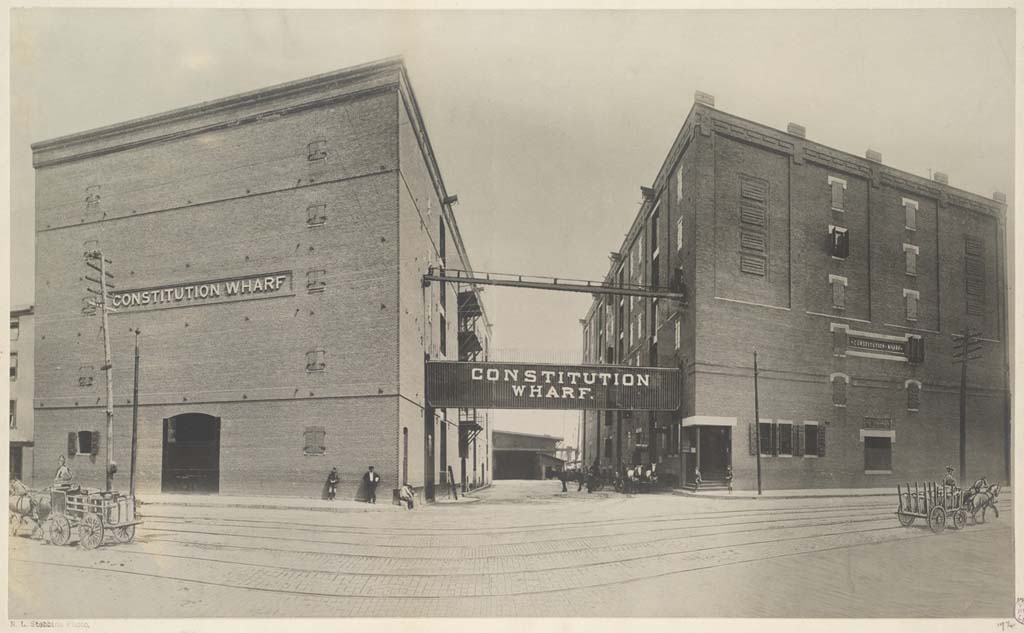
Fitzgerald, affectionately known as “Honey Fitz”, was speaking on the House floor about Constitution because he was introducing legislature to remove the ship from the Portsmouth Navy Yard, where she had served as a receiving ship since 1882. He suggested that she be taken to Washington, D.C. for preservation.
“Massachusetts asks that this grand old ship be perpetuated, and [Massachusetts] relinquishes her claim to have her placed in the waters of the State, near where she was built and manned, that she may be placed in Washington, here to serve as a national monument of the triumphs of the American seamen during the [W]ar of 1812. Such has ever been the true, chivalrous spirit of Massachusetts.” [Congressional Record, January 14, 1897, 798]
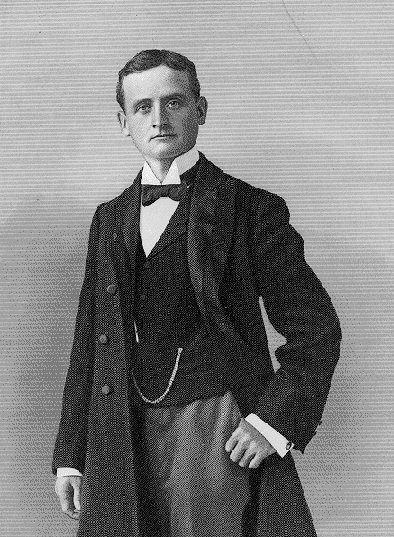
Around this time, too, the initial decision to move Constitution to Washington, D.C. was dropped in favor of taking the ship back to her home town of Boston. Likely pressure from Massachusetts’ constituents was brought to bear on Congressman Fitzgerald to change the ship’s ultimate destination. The Massachusetts Historical Society even weighed in, recording in its January 8, 1897 meeting minutes,
“Resolutions were adopted urging the Massachusetts delegation in the Senate and Congress to support the measure introduced by Congressman Fitzgerald, to have the U.S.S. ‘Constitution’ transferred to Boston, where she was built, and from which port she sailed on all her victorious cruises.” [The American Historical Register…of the Historical, Military and Patriotic-Hereditary Societies… March, 1897, Vol. 1, No. 1, 54]
USS Constitution was briefly docked in the Portsmouth Navy Yard’s balanced floating dry dock between July 19 and 21, 1897. Areas of her lower hull, near the waterline, were re-caulked before she left Kittery, Maine for Boston. It took two days to tow “Old Ironsides” by the U.S. Navy tug USS Leyden and she arrived at Boston safely on September 21, 1897.
One month later, the 100th anniversary of Constitution‘s launch was properly celebrated by Bostonians on October 21, 1897. Congressman John Fitzgerald’s work was done – “Old Ironsides” was home.
The following newspaper pages from The Boston Daily Globe of October 21 and 22, give some sense of the parades, orations, musicales, and night-time illuminations that celebrated USS Constitution‘s history and long career.
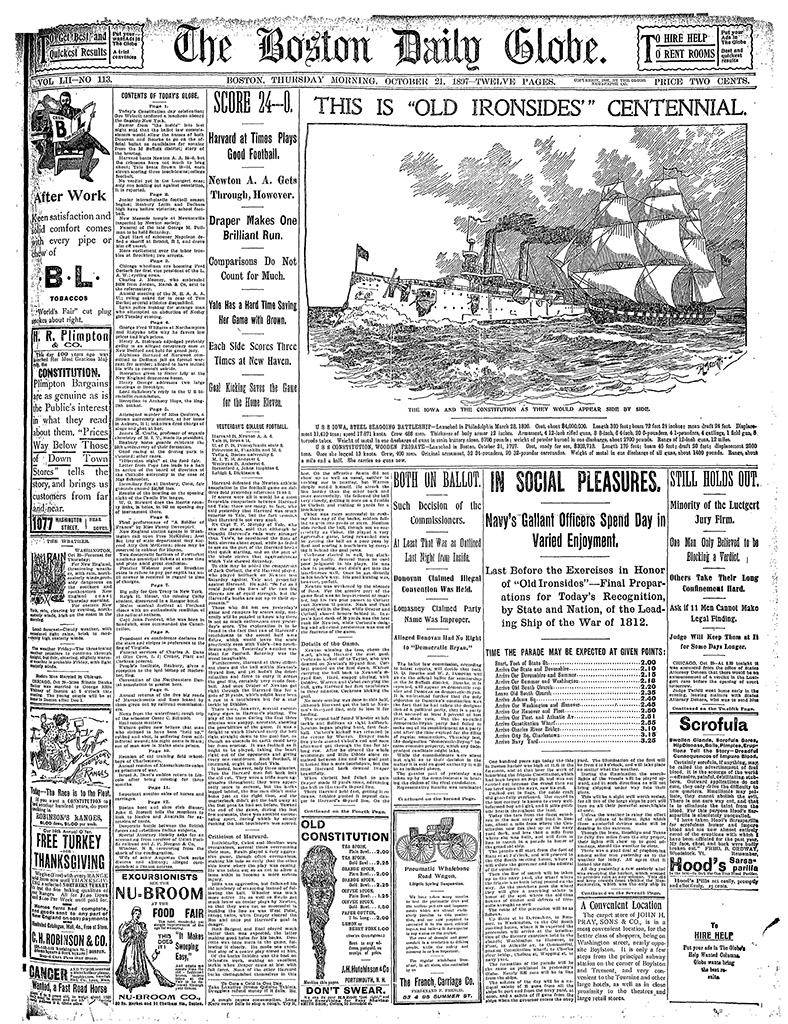
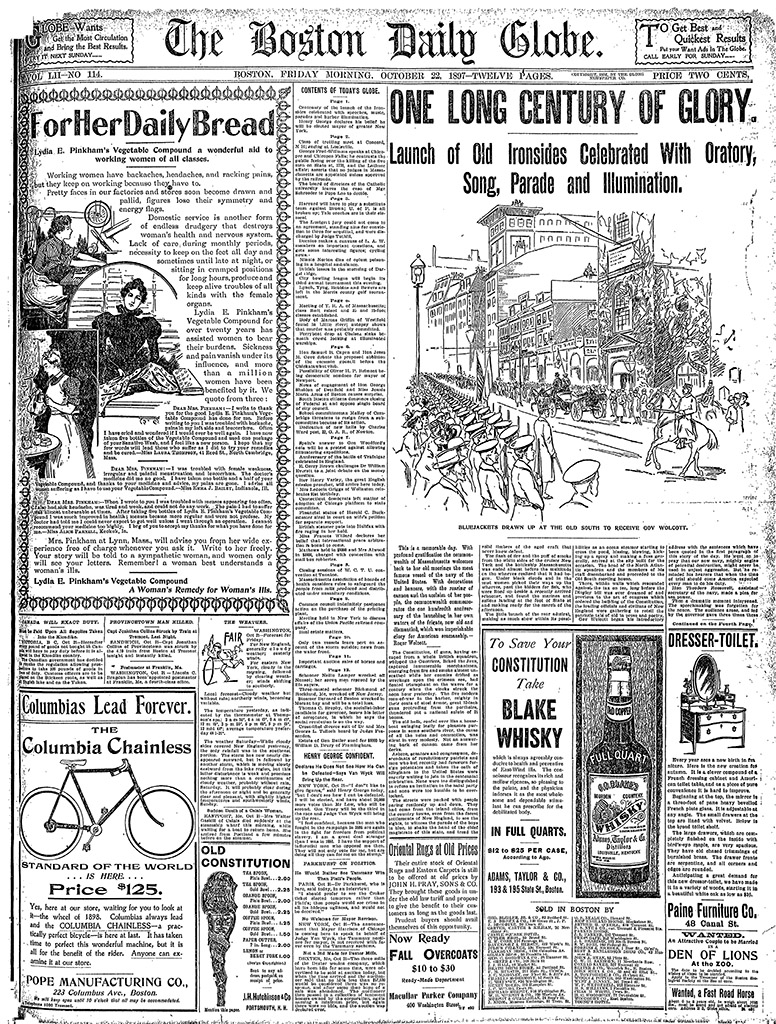
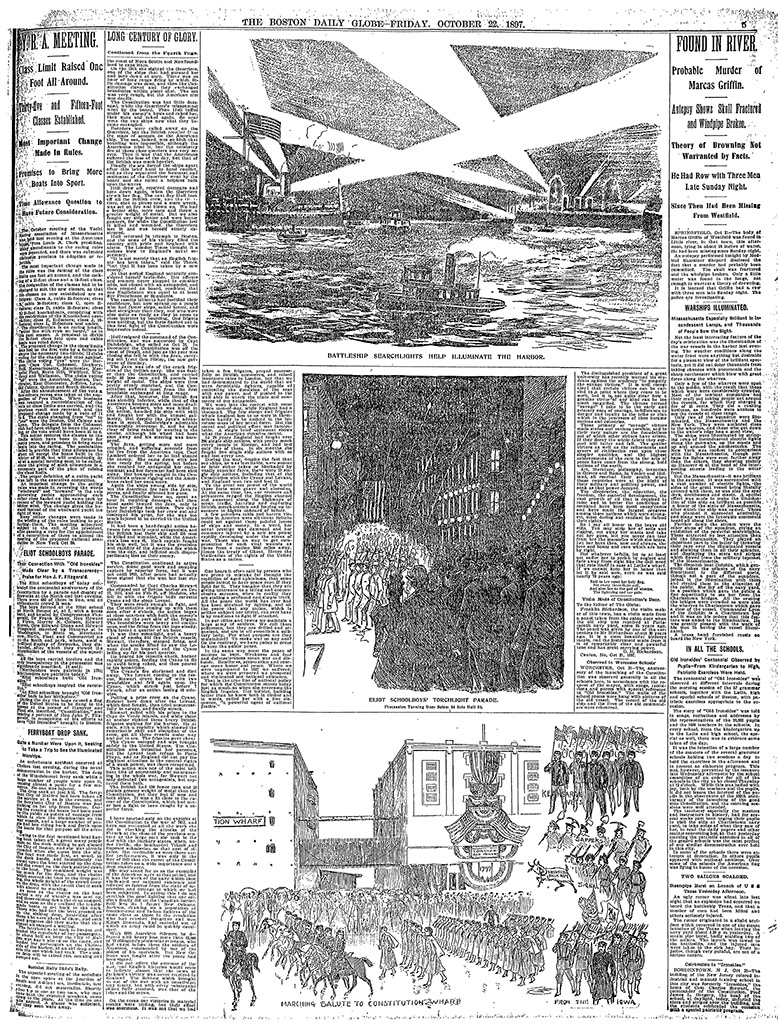
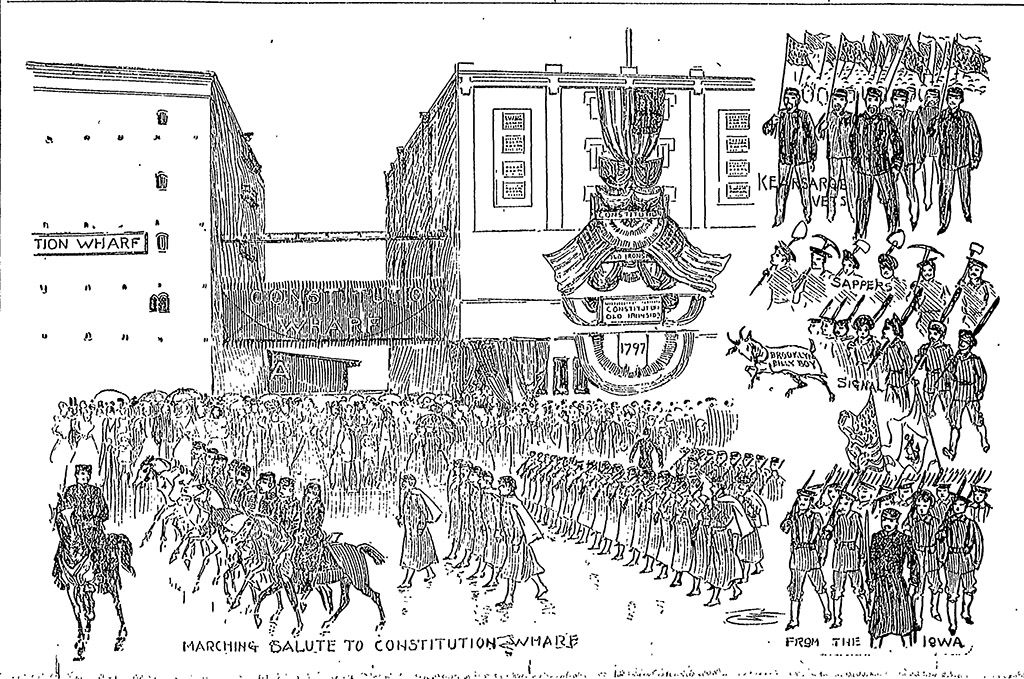
* * *
John Fitzgerald Kennedy, Congressman Fitzgerald’s grandson, grew up not only around the water, but with the knowledge that his grandfather had been instrumental in returning “Old Ironsides” to her place of birth, Boston.
“My earliest memories of the United States Navy go back to the days when, as a small boy, I used to be taken to the U.S.S. Constitution in Charlestown…The sight of that historic frigate, with its tall spars and black guns, stirred my imagination and made American history come alive for me….I am glad…my own family was privileged to play in [Constitution‘s] preservation.” [Old Ironsides, An Illustrated History of USS Constitution by Thomas P. Horgan, Foreword by President John F. Kennedy, 1963]
Kennedy’s love of the sea naturally lead him to join the United States Navy in 1941, where he saw service in the Pacific theatre of war.
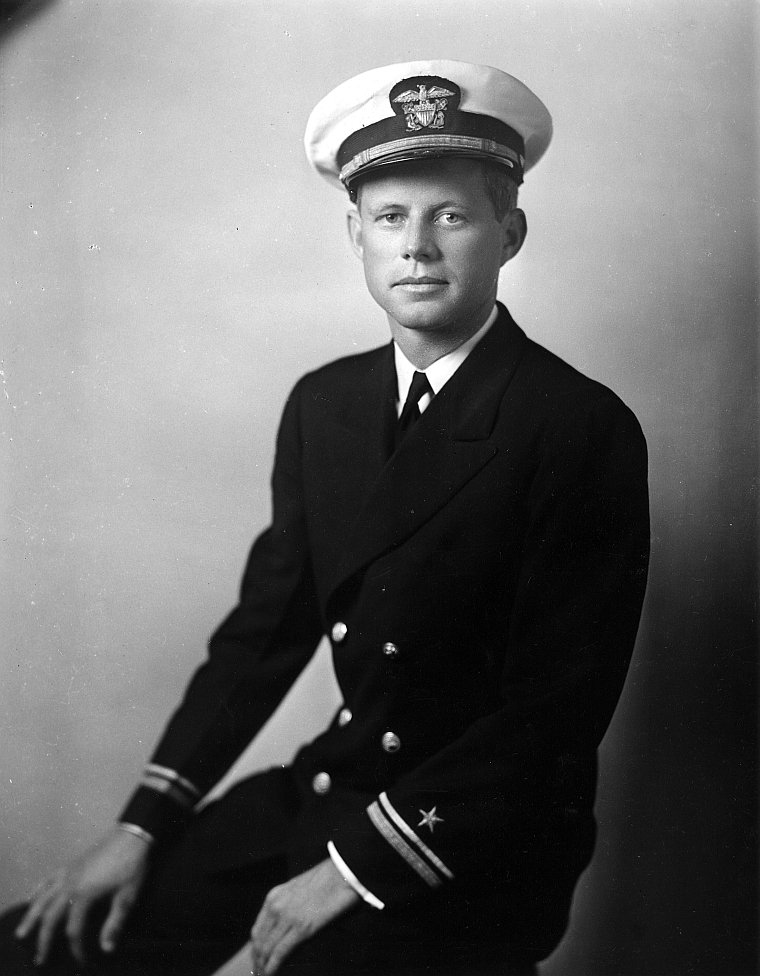
“For forty-three years — whether I was in London, Washington, the South Pacific, or elsewhere – [Massachusetts] has been my home, and, God willing, wherever I serve this shall remain my home….
[Massachusetts’] leaders have shaped our destiny long before the great republic was born. Its principles have guided our footsteps in times of crisis as well as in times of calm. Its democratic institutions — including this historic body — have served as beacon lights for other nations as well as our sister states….
And so it is that I carry with me from this state to that high and lonely office to which I now succeed more than fond memories of firm friendships. The enduring qualities of Massachusetts — the common threads woven by the Pilgrim and the Puritan, the fisherman and the farmer, the Yankee and the immigrant — will not be and could not be forgotten in this nation’s executive mansion.” [Address of President-Elect John F. Kennedy Delivered to a Joint Convention of the General Court of the Commonwealth of Massachusetts, The State House, Boston, January 9, 1961. Also know as the “City Upon a Hill” speech. Courtesy WBZ Radio/John F. Kennedy Presidential Library and Museum]
President Kennedy carried his love of the sea and of American and Massachusetts histories into the Oval Office through paintings, ship models, U.S. Navy memorabilia, and scrimshawed whale teeth.
Ship models were displayed around the office and in the photograph below, the clipper ship Sea Witch can be seen below the bookcase with the shell motif. Models of the sloop-of-war Wasp (left) and USS Constitution (right) can be seen on the fireplace mantle.
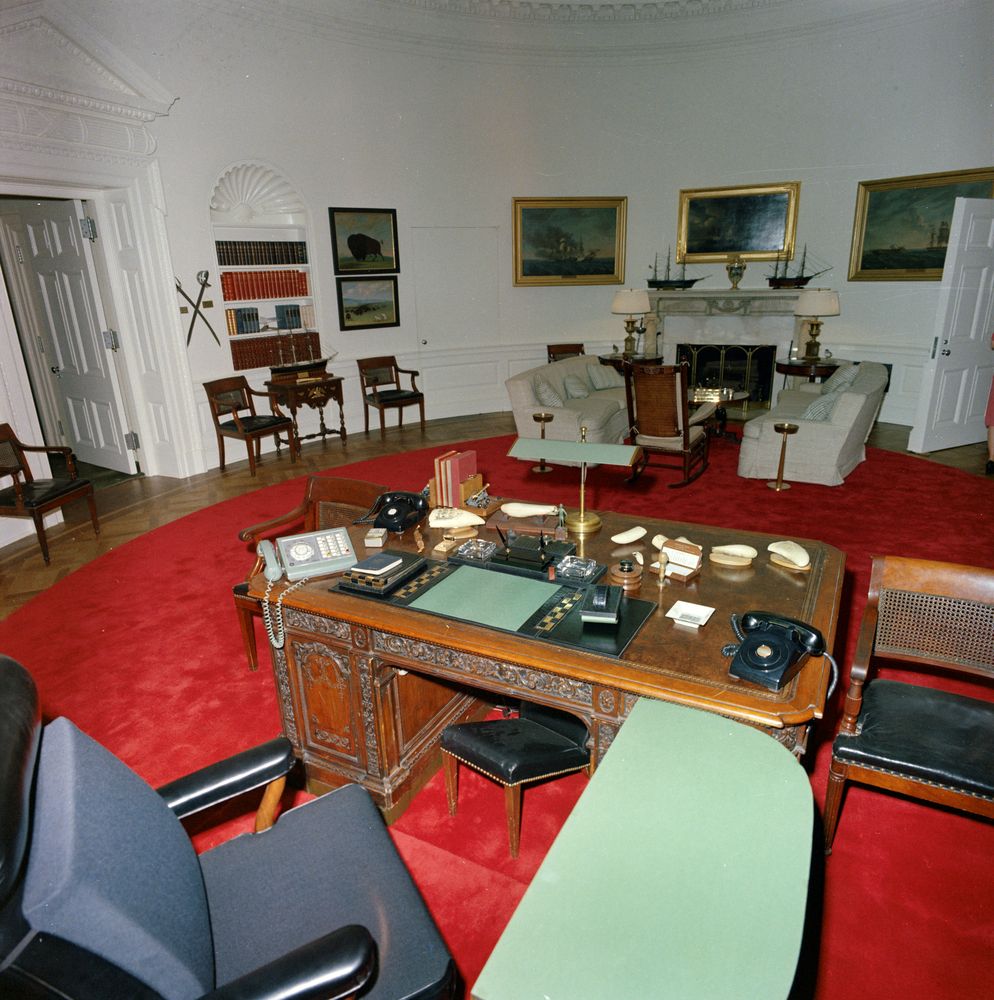
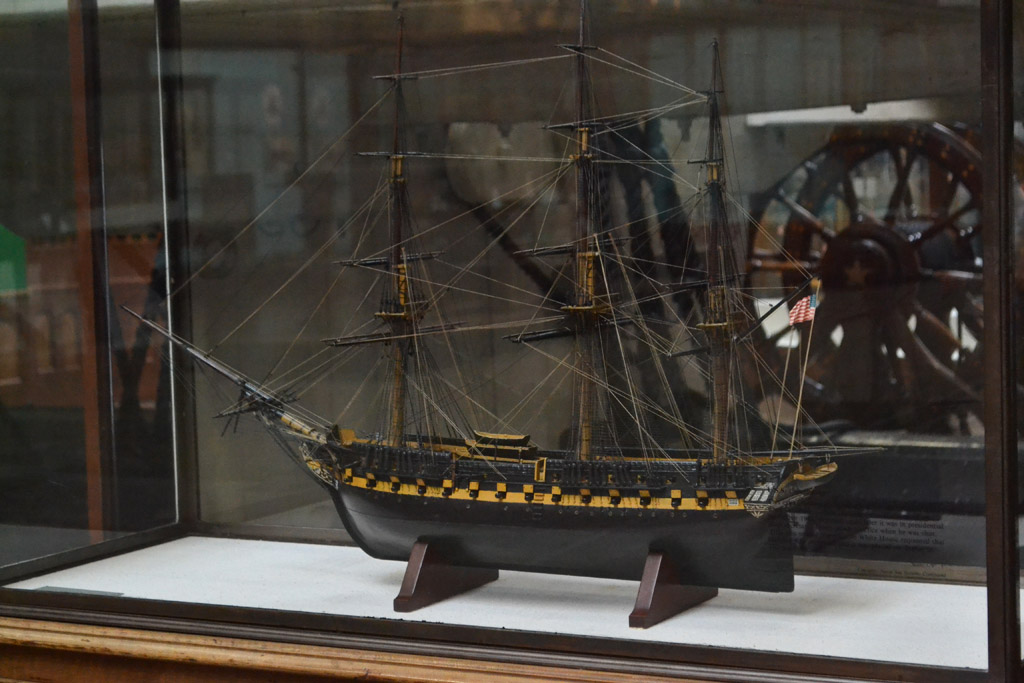
Interestingly, another model of USS Constitution played a role in the early days of the Kennedy administration’s Cold War diplomacy. At the Vienna Summit of June 4, 1961, where President Kennedy and Soviet Premier Nikita Krushchev discussed the growing tension over East and West Berlin, Kennedy presented Krushchev with a model of “Old Ironsides”. A possible intention of the gift to Krushchev might have been to remind the Soviet leader of the origins of the United States Navy and that the power of the post-WWII U.S. Navy harkened all the way back to the strengths and triumphs of USS Constitution in the War of 1812.
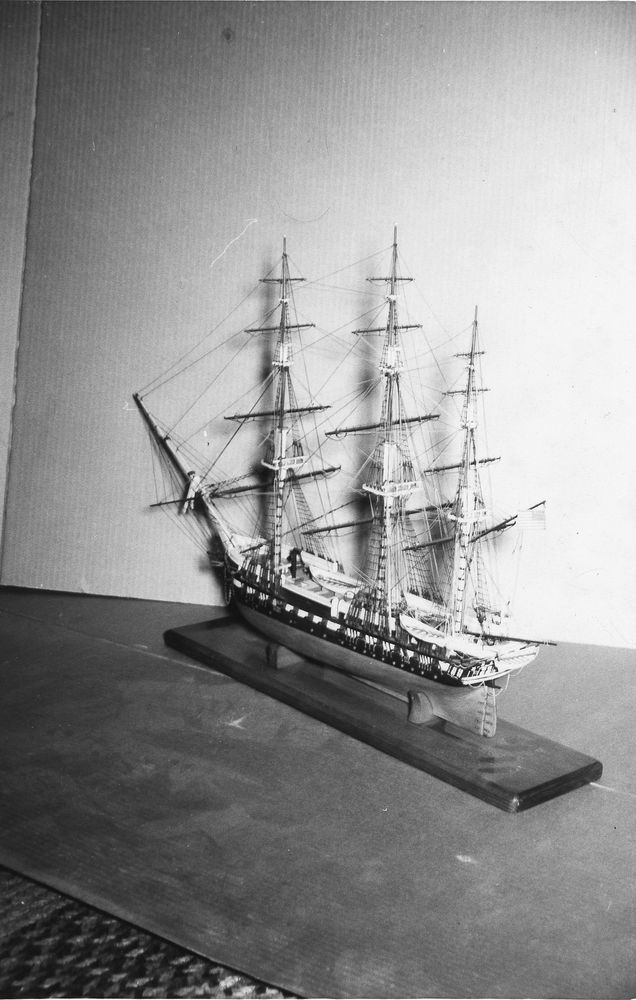
The Kennedy Oval Office walls were decorated with paintings of the American west by George Catlin, including the”Buffalo Hunt under the Wolf-skin Mask” and “Dying Buffalo, Shot with an Arrow” and both from 1832-1833 (far left in photo below). And prominently displayed so that Kennedy could see them from his desk, to the left and right of the fireplace, were paintings two and four of Michele Felice Corne’s famous quartet of paintings which depict the August 19, 1812 battle between USS Constitution and HMS Guerriere.
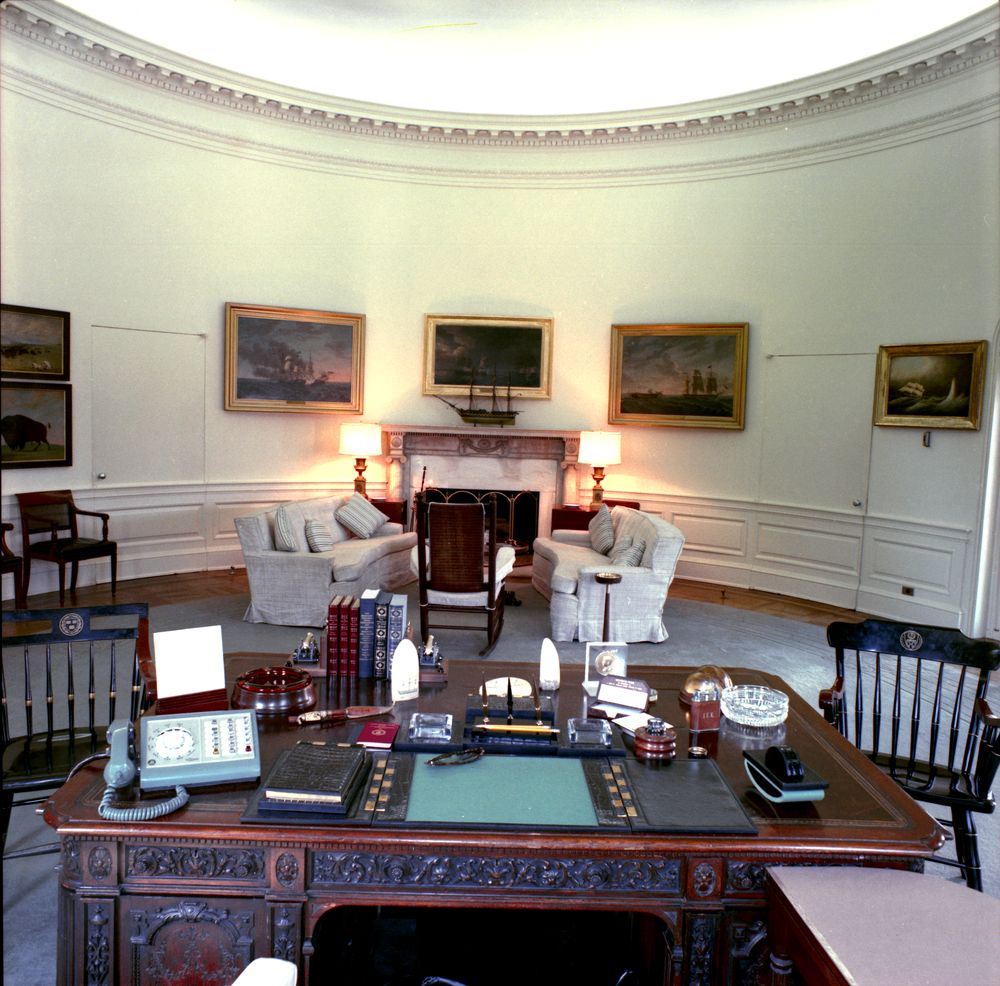
Kennedy continued a tradition of using the “Resolute desk”, made from timbers from HMS Resolute, for the Oval Office. Displayed on the desk’s top were bookends fitted with models of Constitution‘s 24-pound long guns. Purportedly the bookend guns were working replicas! In the photograph below, young Caroline Kennedy appears to find one of the 24-pound long gun bookends of interest.
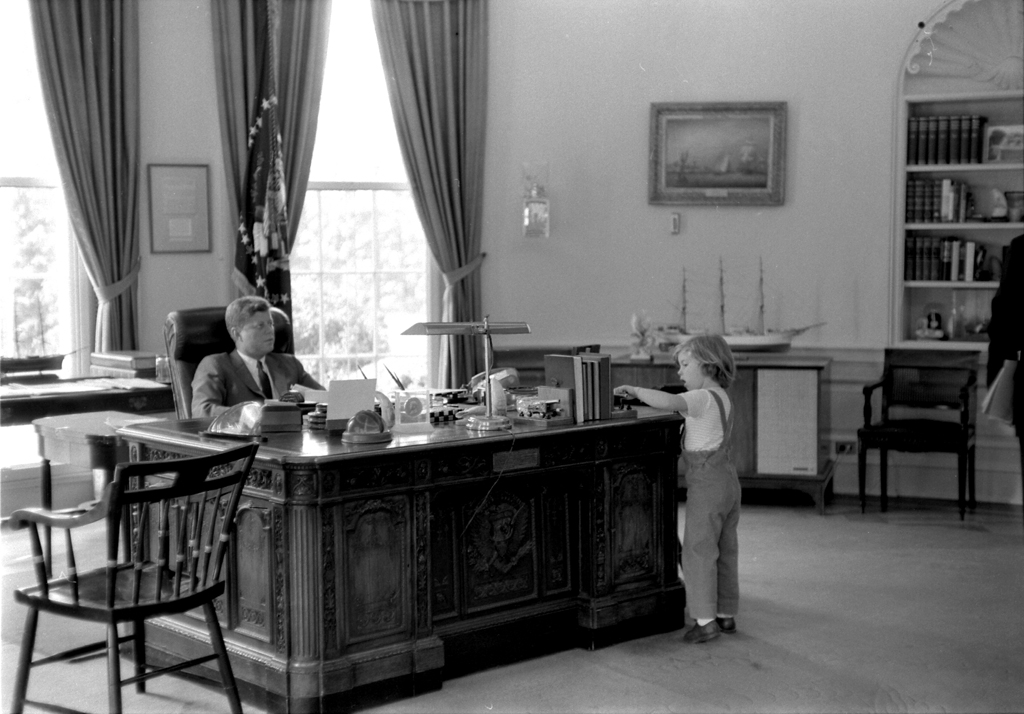
Within months of entering the White House, President Kennedy, who already had the Honey Fitz as the official Presidential Yacht, claimed the U.S. Coast Guard sailing yawl Manitou as his “Floating White House”. Aboard the yawl, Kennedy could indulge in sailing his family, friends, and Hollywood stars off Newport, Rhode Island, in Narragansett Bay, and the coast of Maine.
In 1963, Captain Thomas P. Horgan, USNR (Ret.) published Old Ironsides, An Illustrated History of USS Constitution. Fittingly, Horgan requested that President Kennedy write the foreword to the book. Kennedy reflected on his life-long interest in the history of “Old Ironsides” and the role that his grandfather, John F. Fitzgerald, played in the preservation of the War of 1812 warship.
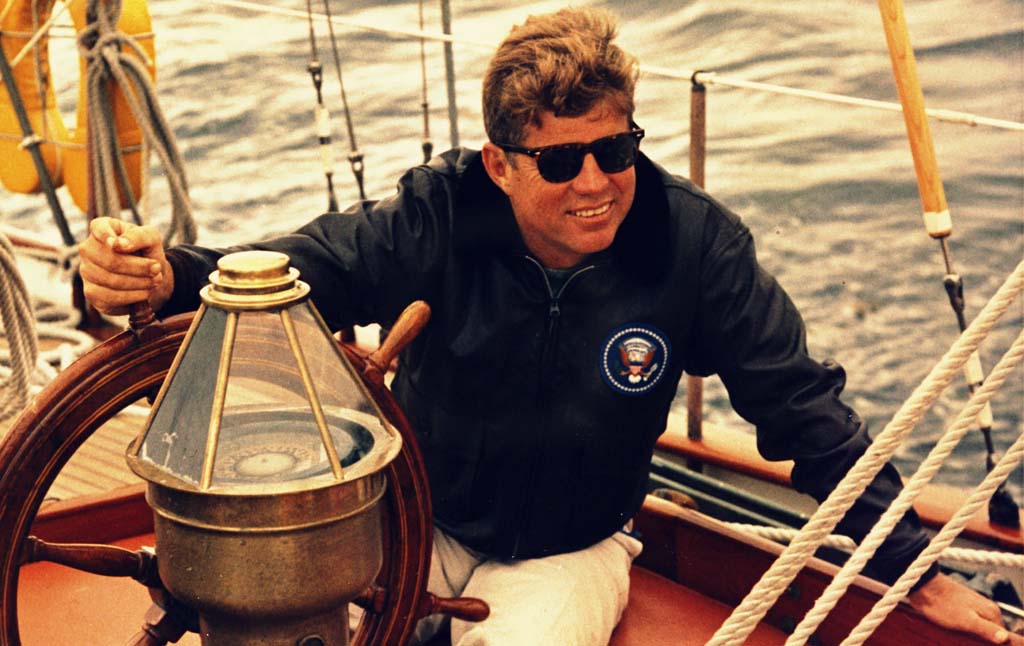
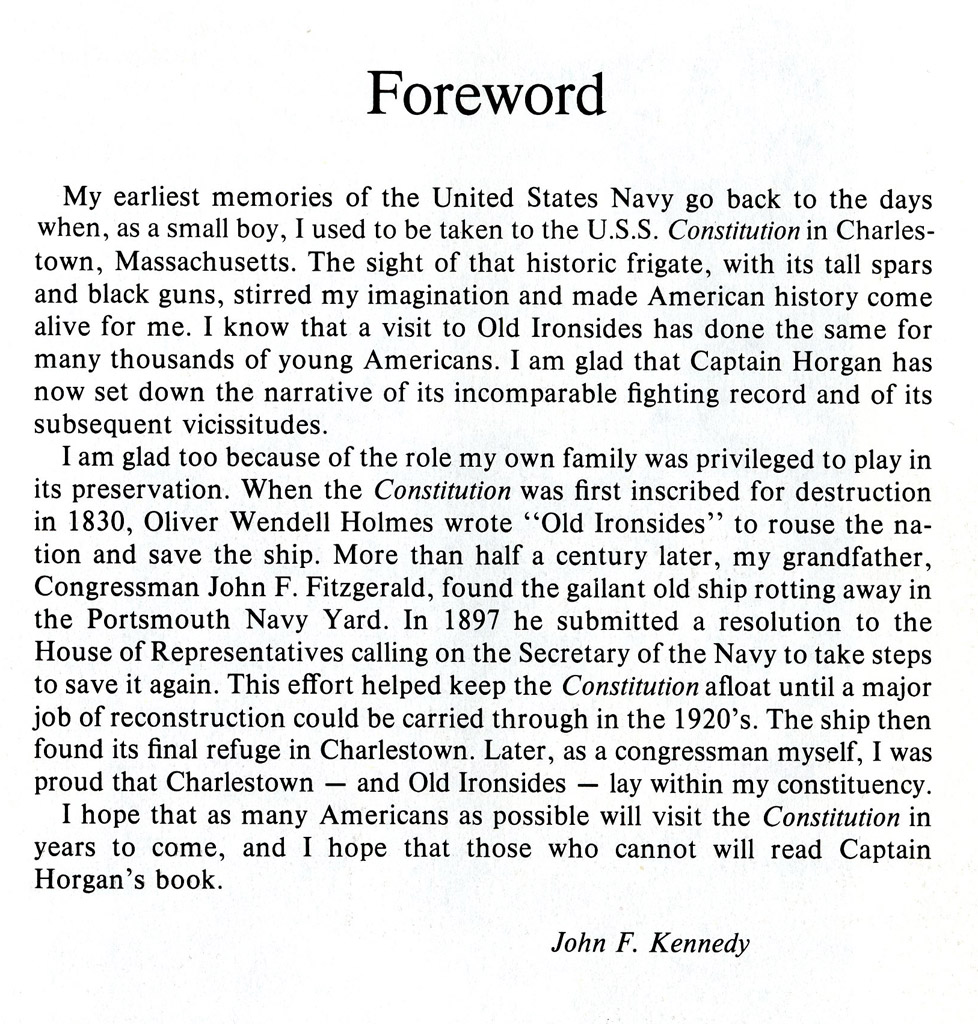
In 1961, President Kennedy established “Operation Sail” for the United States as a means of promoting good will and cultural exchanges between nations through sailing events. The first-ever Operation Sail gathering was scheduled to coincide with the 1964 World’s Fair in New York.
In the spring of 1963, Kennedy had his staff inquire about USS Constitution‘s participation in the event. The ship was slated to enter dry dock in late 1963 for a hull inspection and replacement of deteriorated copper sheathing. As can be seen in the copy of the letter from Secretary of the Navy Fred Korth to Captain Tazewell Shepard below, it was initially believed that Constitution could be undocked and fitted up in time for the July, 1964 Operation Sail rendezvous in New York.
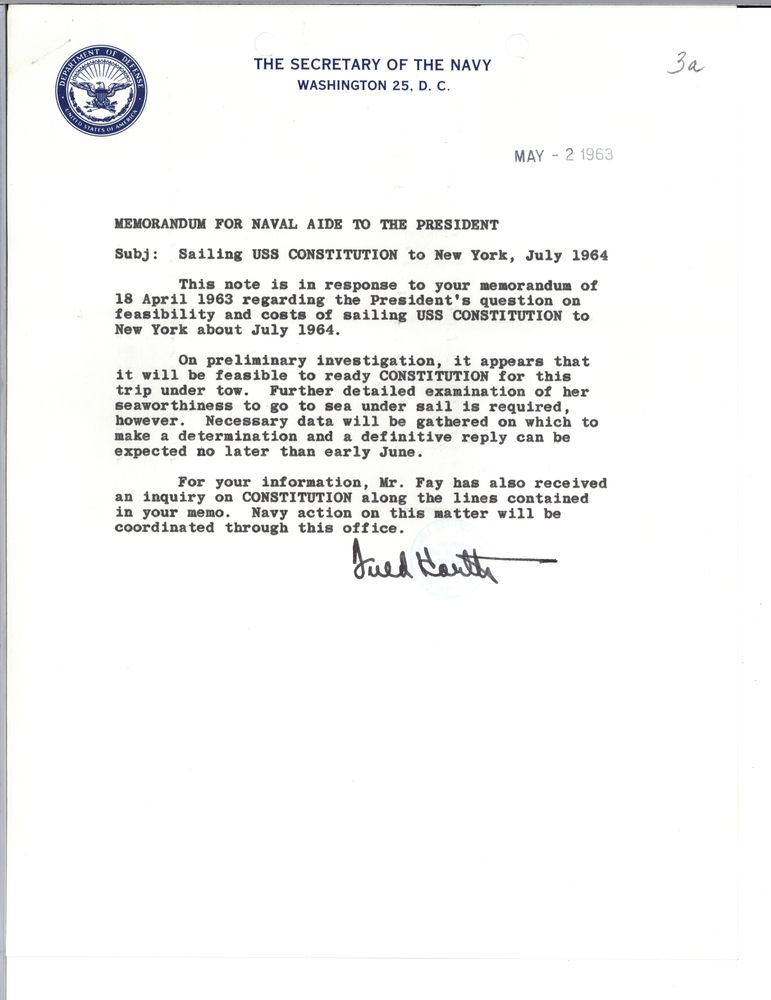
As word spread of the tentative plans to remove Constitution from Boston Harbor and tow (or sail, as was another request of President Kennedy) her to New York, several different constituents voiced their opposition. The Bay State Historical League, composed of directors of Massachusetts historical societies, was quite resolute in its opposition to the plan:
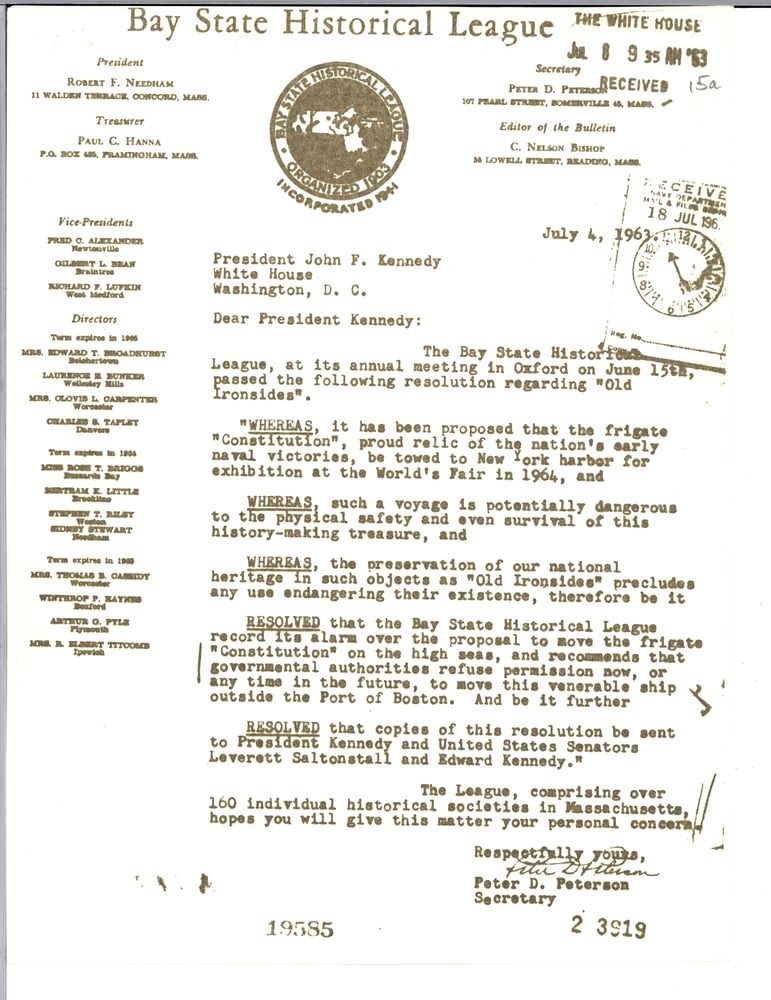
As 1963 progressed, it became clearer that not only would the previously scheduled work on Constitution not be completed in time for the July, 1964 Operation Sail event, but that the projected expenses incurred from the trip were becoming prohibitive. A private sponsor was sought to underwrite the costs of taking Constitution to New York. American Motors Corporation of Detroit was very interested for a time, but in the end, backed out of the plan. By late summer, 1963, plans to take “Old Ironsides” to New York were completely abandoned. Massachusetts Senators Leverett Saltonstall and Edward M. Kennedy sent out a joint press release (below) on August 21, 1963, announcing that the ship would stay in Boston:
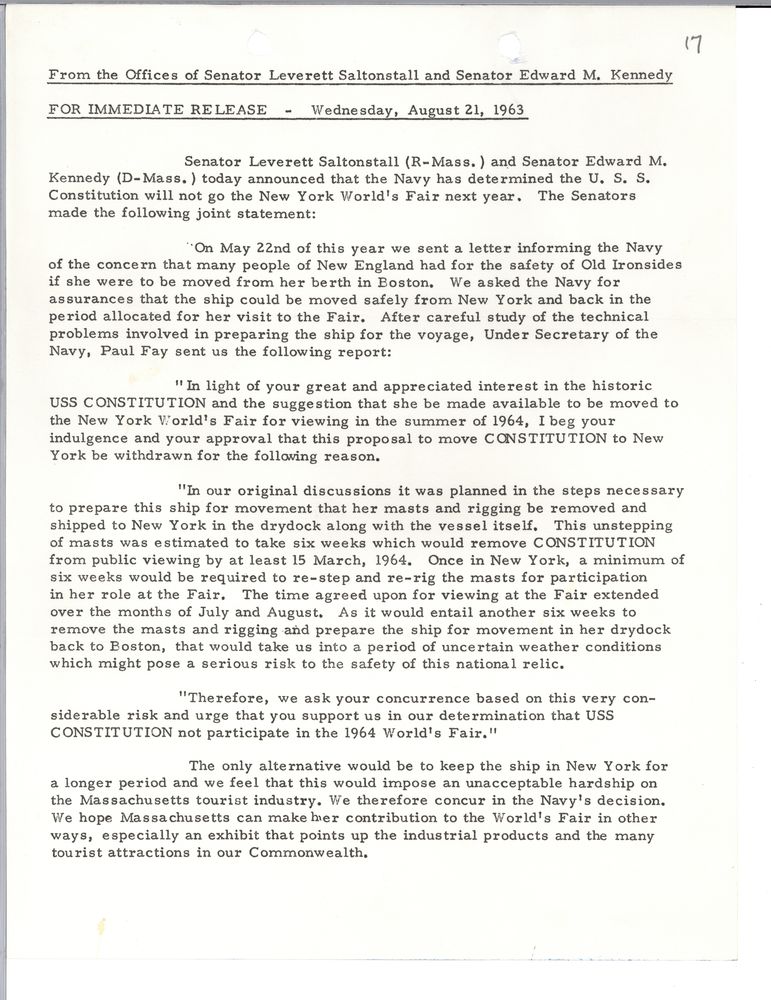
“A flotilla of windships, the like of which has not been witnessed in American waters since the glory days of sail, is now firmly scheduled to assemble [in New York] next July….The gathering here is being coordinated by Operation Sail 1964 — the official name of the American group, and Britain’s Sail Training Association….Never have so many ships taken part as are expected this year….President [Lyndon] Johnson will be asked to take the review, as President Kennedy had promised he would as one of the sponsors.” [“Great Sail Fleet Will Gather Here” by George Horne, New York Times, January 4, 1964]
Operation Sail 1964 “was the largest peacetime gathering of sailing ships up to that point in the [20th] century: 12 Class A vessels, 11 Class B and C vessels, and thousands of spectator craft.” [Operation Sail, Inc. website]
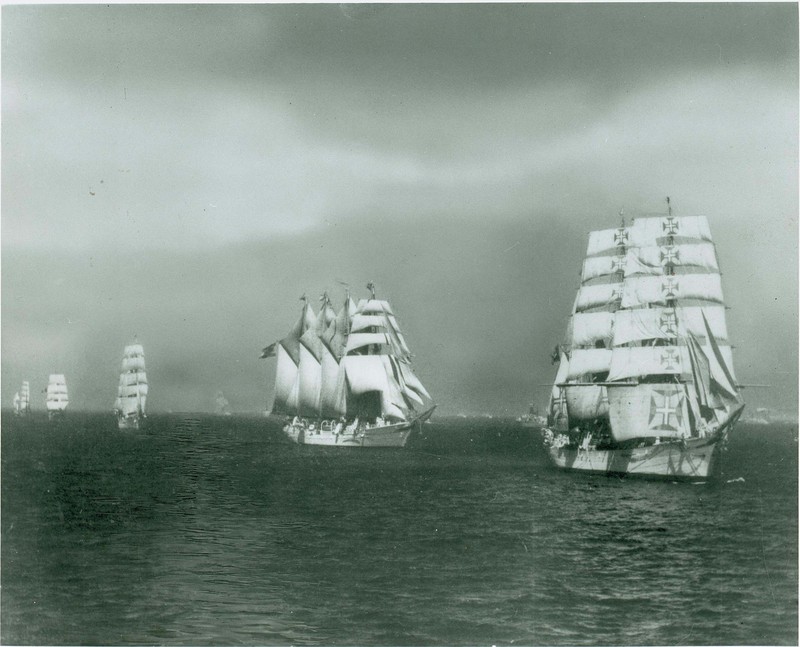
May 29, 2017 marks the 100th birthday of president, author, and sailor John F. Kennedy. Fittingly, Boston, the city he loved, will be the only United States host for the international Tall Ships Rendez-Vous 2017. This 7,000 nautical mile trans-Atlantic race began in April, 2017, in Greenwich, England. It will end in Le Havre, France in late August, 2017. In the spirit of President Kennedy’s wish to use sailing vessels to promote international culture and good will, Boston and the Charlestown Navy Yard will be celebrating Sail Boston 2017 from June 17 to 22, 2017. Visitors can view the magnificent parade of sail on Saturday, June 17, and spend time touring and viewing the 56 sailing vessels representing 13 different countries.
“I really don’t know why it is that all of us are so committed to the sea, except I think it is because in addition to the fact that the sea changes and the light changes, and ships change, it is because we all came from the sea. And it is an interesting biological fact that all of us have, in our veins the exact same percentage of salt in our blood that exists in the ocean, and, therefore, we have salt in our blood, in our sweat, in our tears. We are tied to the ocean. And when we go back to the sea, whether it is to sail or to watch it we are going back from whence we came.” [“Remarks at the America’s Cup Dinner given by the Australian Ambassador, September 14, 1962”. Transcription courtesy of the John F. Kennedy Presidential Library and Museum]
_____
The activity that is the subject of this blog article has been financed in part with Federal funds from the National Maritime Heritage Grant program, administered by the National Park Service, U.S. Department of the Interior, through the Massachusetts Historical Commission, Secretary of the Commonwealth William Francis Galvin, Chairman. However, the contents and opinions do not necessarily reflect the views or policies of the Department of the Interior, or the Massachusetts Historical Commission, nor does the mention of trade names or commercial products constitute endorsement or recommendation by the Department of the Interior, or the Massachusetts Historical Commission.
The Author(s)
Margherita Desy, Historian, Naval History and Heritage Command Detachment Boston
Historian, Naval History and Heritage Command
Margherita M. Desy is the Historian for USS Constitution at Naval History and Heritage Command Detachment Boston.
